-
Posts
14,343 -
Joined
-
Last visited
-
Days Won
25
Content Type
Profiles
Forums
Blogs
Gallery
Events
Store
Posts posted by Ed_Haynes
-
-
F 24 -- The Honorary Badge of Civil Protection
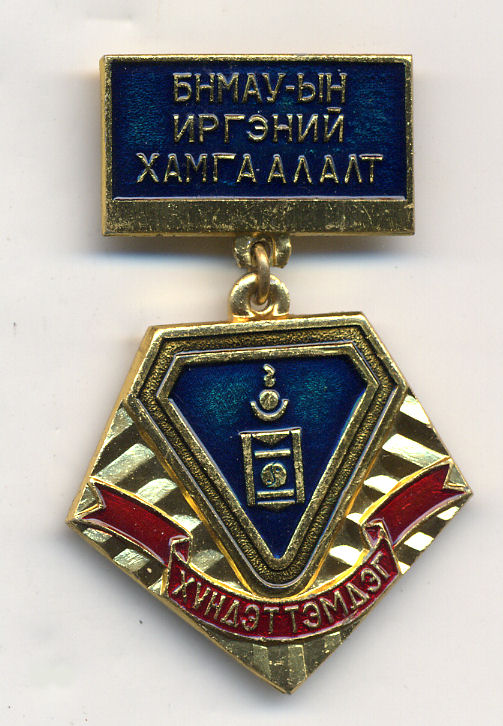
 0
0 -
F 04 -- The Best Policeman
Clearly, a 1960-92 variety, and late in this time period (compare with F 03).
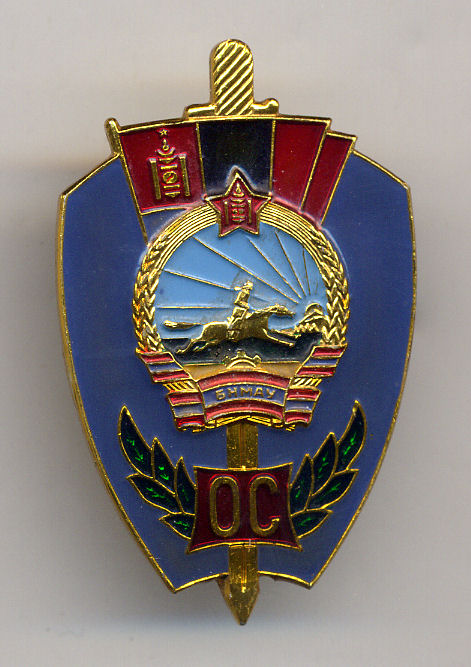
 0
0 -
E 16-- 70 Years of Border Forces
Saw a few folks at the UB airport still wearing this one.
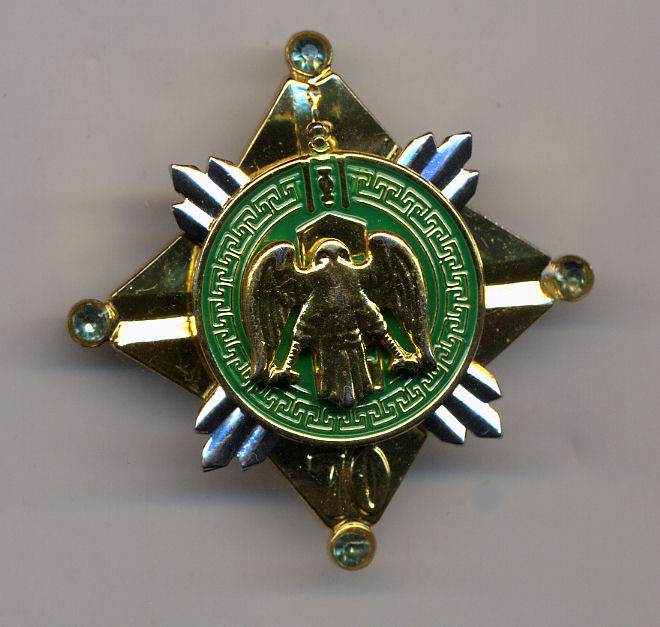
 0
0 -
E 13 -- 40 Years of the Border Army
A hard one to scan!
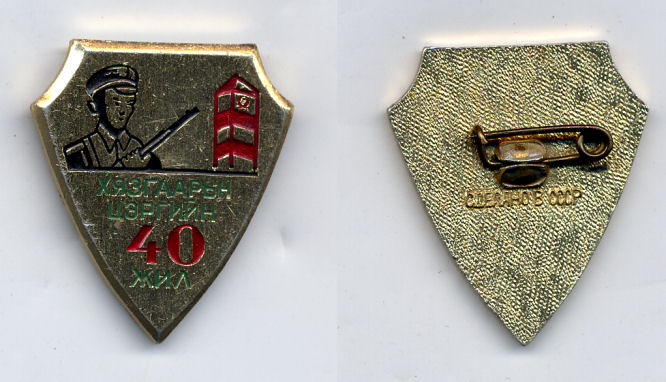
 0
0 -
E 17 - 60 Years of Border Forces
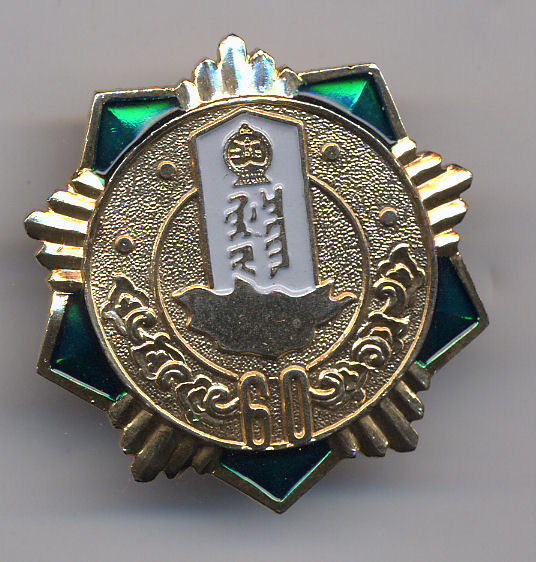
 0
0 -
To give Dolf a break, here are a few others . . . .
E 14 -- 50 Years of State Security, Border and Interior Forces

 0
0 -
All border guard related stuff, please, though I do find E1-E6 to be especially interesting/confusing.
Why not call this a "Category E" thread? (Maybe we need other "category" threads too??)
0 -
Nice things, Dolf! You have launched this very nicely!!
 0
0 -
Who was this guy?
I discussed this with "A Friend of Us All" in Ulanbaatar. He believed an identity can be assigned. Watch this space . . . .

That last ribbon is very much tinkered together on my bar, but has what seems to be a French-style 2nd class (gold-rosette-silver) device.
And just to see them side-by-side . . .


 0
0 -
There hasn't been much focused discussion of these (to me at least) very confusing badges.
Could we start some? Please??
Just to start it off, here is what my notes have on types and such details. I am sure these need MUCH help.

Type 1 (E01, numbered) - Low = 203/High = 945 - 1940s?
Type 2 (E02) - Low = ??/High = 1054 - 1950s?
Type 3 (E03) - 1960s?
Type 4 (heavy construction, reliev reverse, Soviet-made?)
Type 5 (E04) - 1970s?
Type 6 (E05) - 1980s?
Type 7.1 (E06, unnumbered) - 1990s?
Type 7.2 (E06, numbered) - Low = B-5/High = B-1266 - 1990s?
0 -
This medal in my collection now.

Congratulations, Glenn!
0 -
The additional complexity was that these badges were made up by so many European makers to "improve" on the quality and design of the Iranian insigniae.
The standing lion/lying lion does seem to indicate no more than a civil/military division, and not a religious categorisation. As most civil awards went to foreign "experts" in Iran (most of whom were Christians) we see the source of this confusion.
0 -
And the best I could do with the stamp.
Yes, Mongolian names are often more of a complexity that Soviet ones, but at least this isn't a mundane X Yovich Z certificate to a Russian.
Thanks -- as always -- Rick!


 0
0 -
Clarification #1
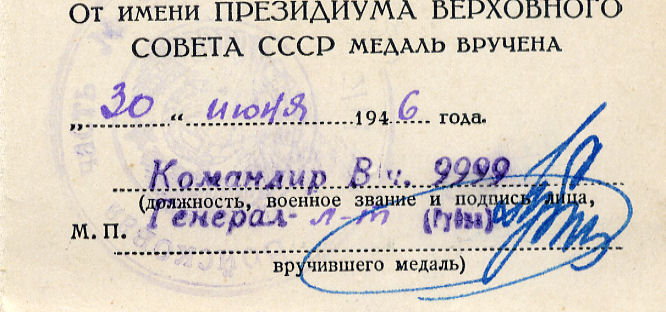
 0
0 -
Oh . . . oh . . . simply lovely.



And worth working to try to figure out. Shall confront boxes of files and back issues of JOMSA tomorrow!
 0
0 -
I guess this is the best place to put this . . . ?
In hopes that something interesting may surface from a decipherment of this one, from Ulanbaatar, . . . .
Help please!

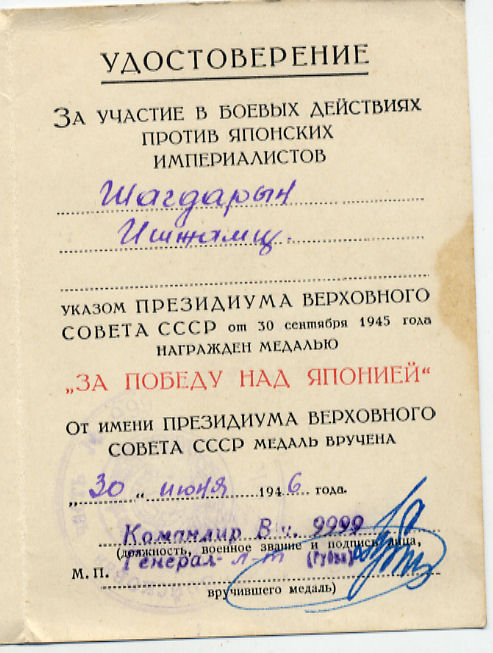

 0
0 -
Since we may have missed/forgotten this thread, allow me to cross-reference here:
0 -
Let me look, I may have that one. Most of the OMSA pieces in those days were pretty much written to formula and Dr. K contributed many pieces (usually with pretty good information). A shame most of this is lost. Though Bob Wehrlich "borrowed" some of it for his book.
There are some other good sources, but I shall have to exchavate -- and they may be in Farsi.
Could you post the group?
0 -
344 - 16.3gr
393 - 14.7gr
With these weights, I think we're on a wild goose chase for these very early awards... just too much chance of slight variations (e.g. manufacturing or shortening of the screw).
Agreed, except for the difference between the flat-back bronze and silver.
The screw-post shortening is surely an issue for all Mongolian awards, as is the random variation in manufacturing (some of which we may otherwise want to see as a sub-sub-variety -- colours of enamel and all).
But this is something we'd never know until we knew it.
0 -
 Old guys squinting at blurs!
Old guys squinting at blurs! 
. . .
The asymmetrical ribbons without spaces make it tough to tell where one ends and the next begins!
Could be, could be . . . the asymmetical business makes a hard task worse.
 0
0 -
Just to update known types/ranges:
1st award
Type 1.1 (Screwback; 3 rivets; SN just below screwpost); Low = 50/High = 2794
Type 1.2 (as above, but with Cyrillic ?B? mintmartk); Low = 1871/High = 1901
Type 2.1 (Pinback 3 rivets; SN at 12 o'clock); Low = 3160/High = 4449
Type 2.2 (Pinback 2 rivets; SN at 5 o'clock); Low = 4685/High = 5380
Type 3.1 (pinback, bronze); Low = 5512/High = 5607
Type 3.2 (pinback, bronze, unnumbered, escapee?)
2nd award
Screwback; 3 rivets; SN just below screwpost ? perhaps 40 awarded?; Low = 12/High = 398
3rd award
Screwback; 3 rivets; SN just below screwpost ? perhaps 10-15 awarded?; Low = 5/High = 200
4th award
Screwback; 3 rivets; SN just below screwpost ?perhaps 4-5 awarded?; Low = 3/High = 86
0 -
Current SB classification and ranges:
Type 1 (screwback ? ~1000 awarded); Low = 2/High = 788; 1945-71
Type 2 (pinback - ~700 awarded); Low = 835/High = 2006; 1971-2002
Type 3.1 (coarse manufacture, numbered??); Low = ??/High = ??; 2002-??
Type 3.2 (coarse manufacture, unnumbered ? or merely unissued - escapee?); 2002?
0 -
Some weights, combining Jan's ("J"), Dolf's ("D"), "FJCP"'s ("F"), Bob's ("B") and mine ("E"). More to come, please . . . ???
Type 1.1 (Mongol legend, crude construction, mirror reverse, integral number) - Low = 9/High = 393
E ? 155 = 13.80 g
E ? 380 = 12.95 g
Type 1.2 (Mongol legend, crude construction, mirror reverse, engraved number) - Low = 396/High = 399
E - 396 = 11.35 g
Type 2.1.1 (Mongol legend, mirror reverse, serial number at 10 o?clock) - Low = 32/High = 496
???
Type 2.1.2 (Mongol legend, mirror reverse, serial number at 7 o?clock) - Low = 221/High = 4100
B - 534 = 15.2 g
B - 791 = 16.0 g
F - 865 = 16 g
J - 1236 = 13 g
F - 1507 = 16 g
E ? 2932 = 16.65 g
E ? 2949 = 16.40 g
E ? 3017 = 15.40 g
E ? 3035 = 13.50 g
B - 3283 = 16.4 g
D - 3344 = 16.80 g
D - 3345 = 16.15 g
B - 3382 = 14.7 g
J - 3450 = 16 g
J - 3519 = 19 g
F - 3537 = 19 g
Type 2.2.1 (Mongol legend, flat reverse, silvered brass, serial number at 8 o?clock) - Low = 865/High = 1806
???
Type 2.2.2 (Mongol legend, flat reverse, silvered brass, serial number at 6 o?clock) - Low = 1124/High = 1958
E ? 1430 = 16.50 g
B - 1800 = 15.2 g
Type 2.2.3 (Mongol legend, flat reverse, silver) - Low = 4164/High = 4586
F - 4400 = 19.1 g
E ? 4546 = 20.25 g
Type 3 (Cyrillic legend, unnumbered)
E ? 27.30 g
E ? 28.55 g
0 -
Playing with my new scale today. Some interesting and weighty results on the few RBLs on "home leave". All Type 1 (screwback).
83 - 64.80 grams
198 - 61.90 grams
484 - 62.55 grams
1423 - 60.05 grams
All weighed without screw nuts of course.
Something to think about??
Tells us something about (1) variability in manufacture, (2) decline in standards over time, and (3) the dangers of expecting too much standardization?
0




Police Badges
in People's Republic Mongolia
Posted
F 21 -- The Auxiliary Brigade of Police
Slightly different from what Battushig shows, but close enough.